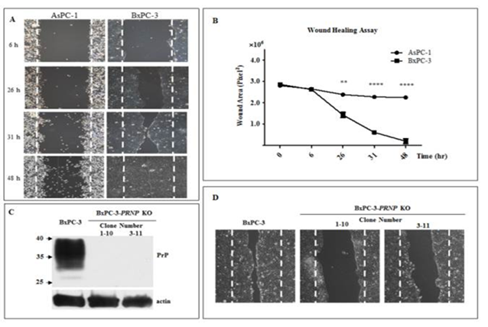On Dec 18, 2015, the research group led by Prof. Chaoyang Li in WIV, had reported the identification of another PDAC cell line, AsPC-1, which expresses a matured, GPI-anchoredPrP.Comparisonofthe24genes involved in the GPI anchor modification pathway between AsPC-1 and BxPC-3 revealed 15 of the 24 genes, including PGAP1 and PIG-F were down regulated in the latter cells. They also identified 6 missense mutations in DPM2, PIG-C, PIG-N and PIG-P alongside 8 silent mutations. When BxPC-3 cells were fused with Chinese Hamster Ovary (CHO) cells, which lack endogenous PrP, pro-PrP was successfully converted into matured, GPI-anchored PrP. Expression of the individual gene, such as PGAP1, PIG-F, or PIG-C into BxPC-3 cells does not result in PI-PLC sensitivity of PrP. However, when PIG-F but not PIG-P is expressed in PGAP1 expressing BxPC-3 cells, PrP on the cells surface becomes PI-PLC sensitive. Thus, low expression of PIG-F and PGAP1 are the major factors contributing to the accumulation of pro-PrP. More importantly, BxPC-3 cells expressing GPI anchored PrP migrate much slower than BxPC-3 cells bearing pro-PrP.
Collectively, these results show that multiple gene irregularity in BxPC-3 cells is responsible for the formation of pro-PrP, and binding of pro-PrP to FLNA contributes to enhanced tumor cell motility.
